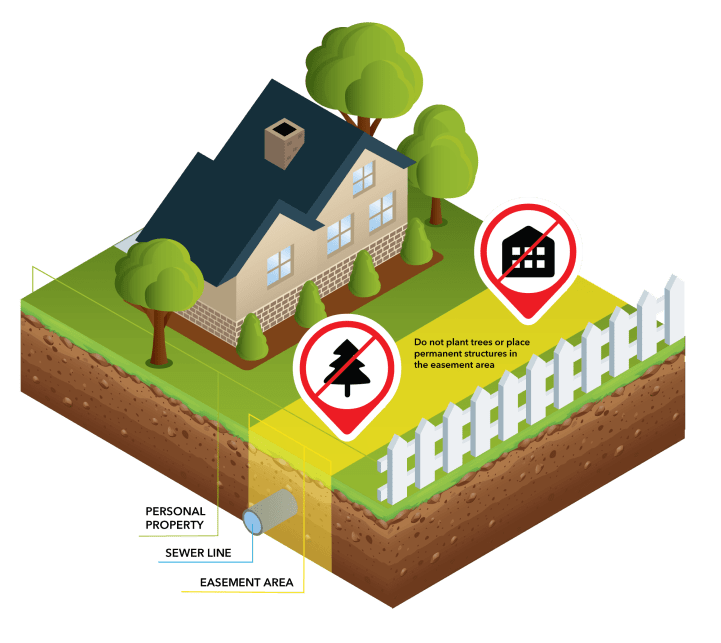Sanitary Sewer Easements
Little Rock Water Reclamation Authority (LRWRA) provides critical sanitary sewer services to protect public health and the environment. We maintain 1,400 miles of public sewer pipelines throughout Little Rock to service more than 202,000 residents. Routine inspection of our sewer pipelines are essential in preventing hazardous backups into homes and businesses or overflows into the community from the 32,000 manholes we maintain.
Our Collection Systems Maintenance Division handles maintenance of all sanitary sewer pipelines in Little Rock. The pipes are located underground and are connected by a series of manholes at or just above ground level. Manholes and sewer pipes are found either in public right-of-way or in easements on private property. To maintain our shared sewer system, our LRWRA team relies on property owners to ensure access to all manholes and pipelines located within an easement on private property.
Please use the illustration below to assist you as you explore our FAQs on sanity sewer easements.

